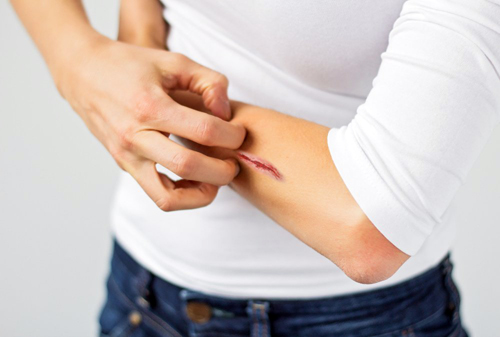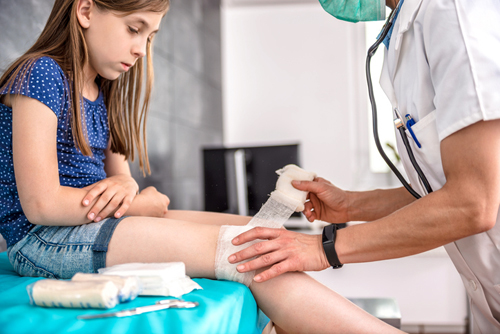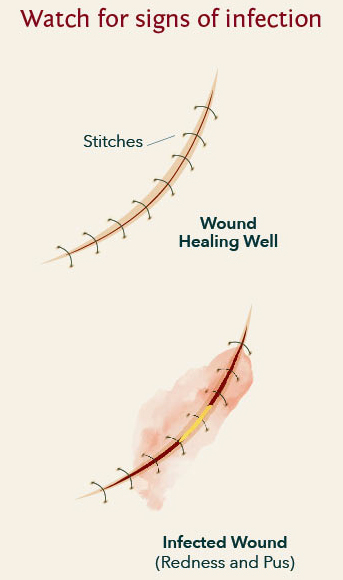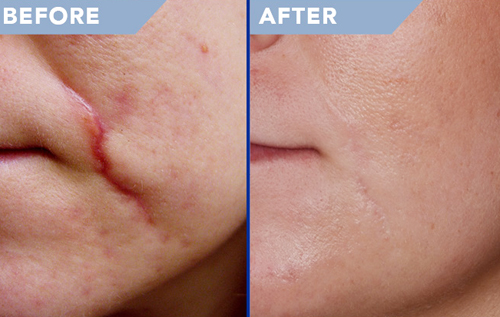
A wound can take from 2 weeks up to 2 years to heal! It is a delicate and complex process that involves the blood vessels, white blood cells, bacteria and skin. It also inevitably involves inflammation and pain.
While there are many types of wounds, a stitched wound will require even more attention.
So how can you help your body to heal as quickly and safely as possible?
We asked Dr. Costi for some tips to avoid infection and help the wounded area to heal faster.

An injury that is kept warm will help your body produce new tissue. Also, keeping the wound covered with clean bandages will prevent an infection from taking hold.
Stay dry, stay out of the sun and keep your body cool, to avoid sweat and bacteria as much as possible.
The wound and the stitches that hold it together may be cleansed gently with mild soap and water after 24 hours, up to twice daily to decrease the risk of infection. Your doctor may also recommend the use of an antibiotic ointment like bacitracin to help minimize infection.
To help your body heal better, take good care of it.
Take a multivitamin or a supplement that contains vitamin A, calcium, iron, zinc and vitamin C. These all help your body to heal, help to create collagen and boost your immunity.
Smoking constricts the blood vessels, and without proper blood flow to the area, the wound will take longer to heal. Also, in case you take anti-inflammatory drugs ask your doctor about an alternative. Anti-inflammatory medications can slow the body’s natural immune processes and prevent the wound from healing.
Get some light regular exercise like moving around the house and light walking. It might be uncomfortable but do it slowly. Regular exercises will increase blood flow to the wound site and help it heal.

As a wound heals it will itch, and it is very important that you don’t scratch it. Scratching can lead to infection.
It is normal for the wound to be slightly red as part of the normal healing process. However, if the redness begins to spread from the edges of the wound, or if it becomes warm and painful, or pus begins to drain, it is important to have the wound rechecked. If an infection is present, the stitches may need to be removed immediately and an antibiotic prescription considered.
Once the stitches have been removed, it will take months for the wound to finally mature, so be patient. A healing cream will be recommended to faster help the skin heal quicker. For the first two to three months, there will be a red, raised healing ridge. Then it will gradually flatten until the scar fades.

Lasers have been used to treat all kinds of scars, by removing the outer layer of skin and eliminating the surface skin that has been damaged. Dr. Costi will determine which laser to use (CO2 or erbium) in order to reduce the scar’s itching or pain, and improve its appearance.
MOST IMPORTANTLY REMEMBER: if your wound leaves a scar, it is a sign of how your body healed itself. You are here, you went through something and you survived it. Whatever it was, it made you stronger. Wear it with pride, it is a part of who you are.